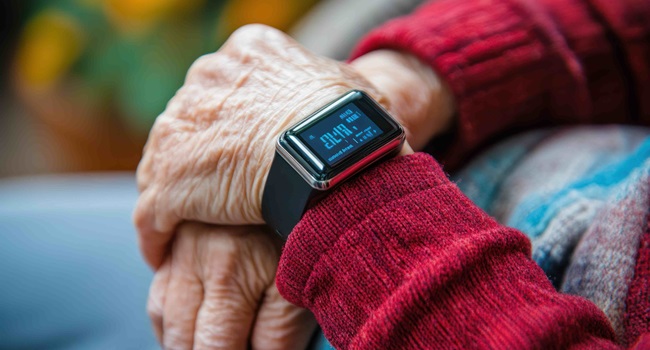Managing a senior living home presents unique challenges. Balancing resident care, staff coordination, and operational tasks can be complex. However, integrating smart tools can streamline these processes, enhancing efficiency and improving the quality of life for residents.
Streamlining Operations With Advanced Software
Efficient operations are vital to any assisted living facility. Advanced software solutions simplify administrative tasks and give staff more time to focus on residents, helping improve overall service quality.
Centralized Data Management
Centralized data management eliminates the hassle of sifting through separate files or systems to find critical information. For example, when preparing meals in a nursing home, staff can quickly check a resident’s dietary restrictions or preferences in seconds. Beyond convenience, this approach enables administrators to analyze trends, such as commonly requested activities or health concerns, to guide better decision-making.
Financial and Staff Planning
Advanced software tools are indispensable for optimizing budgets and staff schedules. A scheduling app, for instance, can assign shifts based on peak hours, ensuring adequate coverage during busy times. Similarly, financial management software helps monitor expenses and forecast budgets, allowing facilities to stay financially sound while maintaining high-quality care.
Streamlining operations with assisted living software creates a foundation for smoother processes, empowering staff to focus on meaningful resident interactions.
Enhancing Resident Care Through Technology
Personalized care is essential for residents’ health and happiness. Smart technology ensures you can cater to unique needs while maintaining a high standard of care for everyone.
Real-Time Health Monitoring
Wearable devices like smartwatches or fitness trackers offer immediate health updates to caregivers. These devices can monitor heart rates, blood pressures, and oxygen levels as well as analyze sleep patterns, including duration and quality. Advanced smartwatches can even perform electrocardiograms (ECG) to detect irregular heart rhythms, which may indicate an increased risk of stroke.
Personalized Activity Plans
Technology can bring tailored experiences to life for residents. Virtual reality (VR) programs, for instance, allow residents with limited mobility to enjoy simulated travel experiences, from a gondola ride in Venice to a safari in Africa. These activities are entertaining and can also boost emotional well-being, encouraging residents to stay engaged and socially active.
Smart tools make it possible to deliver senior care that feels both personal and proactive, improving residents’ overall quality of life.
Improving Staff Efficiency With Automation
Efficient staff operations are crucial for delivering excellent care in assisted living facilities. Automation helps lighten the workload, ensuring your team can focus on personalized care and pressing tasks.
Medication Management
Automated medication dispensers are a lifesaver when it comes to minimizing errors. These systems track doses and alert staff when a resident misses their medication. By ensuring timely and accurate dispensing, staff can avoid potential health complications while reducing the administrative burden.
Remote Patient Monitoring
Remote monitoring tools let caregivers track residents’ health without requiring invasive check-ins. For instance, a nurse can monitor a resident’s blood pressure or glucose levels from their phone. This flexibility allows caregivers to address issues promptly, even when off-site, ensuring consistent care quality.
By adopting automation, you can create an environment where staff work efficiently while residents receive reliable, attentive care.
Ensuring Safety With Smart Building Solutions
Safety is a top priority in assisted living communities. Smart building technologies create secure environments while reducing operational costs.
Fall Detection and Prevention
Falls are a major concern in residential care facilities and nursing homes. Fortunately, smart flooring systems equipped with sensors can detect falls immediately, triggering an alarm and alerting staff. These systems use RFID tags embedded in carpets to track movement patterns and identify risks before accidents occur.
Energy Efficiency
Smart building technologies don’t just enhance safety—they also help reduce costs. Motion-activated lighting ensures hallways and common areas are illuminated only when needed, cutting down on energy waste. Similarly, smart thermostats adapt to occupancy patterns, maintaining comfort while minimizing energy use.
Smart building solutions promote a safe, efficient, and sustainable living environment for residents and staff alike.
Enhancing Communication With Telehealth Services
Clear communication is indispensable to delivering exceptional care in senior living facilities. Telehealth connects residents with healthcare providers and family members, ensuring convenient access to information and support.
With telehealth, residents can attend medical appointments virtually, reducing the need for transportation and avoiding disruptions to their daily routines. For example, a resident recovering from surgery can receive follow-up care from the comfort of their room. This approach minimizes stress and ensures consistent monitoring for chronic conditions or post-procedure recovery.
Family involvement is another significant benefit of telehealth. Many platforms allow family members to join consultations remotely, keeping them informed about their loved one’s care. At the same time, healthcare providers can collaborate more effectively, making real-time adjustments to treatment plans to improve outcomes.
Final Thoughts

Integrating smart tools into your senior living facility can streamline operations, enhance resident care, improve staff efficiency, ensure safety, and facilitate better communication. By embracing these technologies, you can create a more efficient and supportive environment for both residents and staff, ultimately leading to improved quality of life and operational success.
















